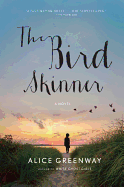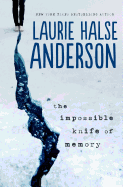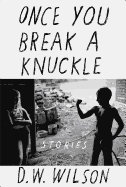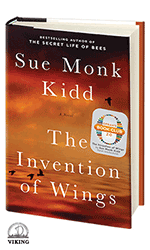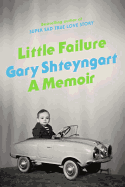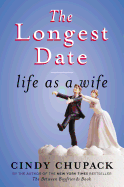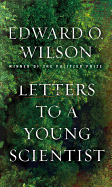It seems that it's all dog books all the time around here, since we have a dog-centric office. (Although most of our editors are cat people.) So it's a pleasure to come across a lovely cat book, and there might be none lovelier than Alpha Cat, a hardcover published by Officina Libraria, distributed by ACC ($24.95). Illustrated by Gabriella Gallerani (who, oddly enough, lives with a parrot and a Yorkie) and written by Paola Gallerani (who does have a cat named Quazzo), it's an A to Z compilation of cat breeds, and Gabriella Gallerani, a scientific illustrator, has captured the essence of felinity with meticulous detail and wit.
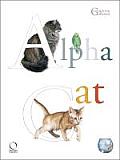 "O" is for Ocicat, a new breed that forms an exclusive bond with a person and suffers from loneliness. The striped cat peers out from an "O" with an intense gaze, daring you to leave it alone. "S" is, of course, for Siamese, and the cat looks quite regal curled around its letter. The Ragdoll coyly poses behind the "R," while a Manx kitten stretches down and across the "X" to reach a goldfish bowl.
"O" is for Ocicat, a new breed that forms an exclusive bond with a person and suffers from loneliness. The striped cat peers out from an "O" with an intense gaze, daring you to leave it alone. "S" is, of course, for Siamese, and the cat looks quite regal curled around its letter. The Ragdoll coyly poses behind the "R," while a Manx kitten stretches down and across the "X" to reach a goldfish bowl.
In addition to the charming illustrations, Paola Gallerani has added quotes, poems and book excerpts; with each letter entry, she includes tidbits about cats with the corresponding name: "H" has Henri (Le Chat Noir) of YouTube fame; Hope, a cat who survived the 9/11 attacks while protecting her kittens; Humphrey, the Chief Mouser at Downing Street from 1989 until retiring in 1997; Hello Kitty, the iconic "empress of merchandising."
And cat haiku:
My brain: walnut-sized.
Yours: largest among the primates.
Yet, who leaves for work?
"One cat just leads to another...." In Alpha Cats, it's a delightful progression. --Marilyn Dahl, editor, Shelf Awareness for Readers
Radiance of Tomorrow
by Ishmael Beah
Ishmael Beah made his mark in 2007 with A Long Way Gone, his striking memoir of the time he spent as a boy soldier in war-torn Sierra Leone. In Radiance of Tomorrow, his first novel, he revisits Sierra Leone to examine not only what happens to those communities devastated by war, but also their traditions and the outlook for their future. What begins as a story of survivors returning to what used to be home and attempting to reconstruct the rhythms of normal life takes several surprising turns as Beah carefully unfolds his elegant and layered narrative.
The novel opens with Mama Kadie traveling on foot to Imperi, dreading what she might find: "There were bones, human bones, everywhere, and all she could tell was which had been a child or an adult." Mama Kadie is soon joined by village elders Pa Moiwa and Pa Kainesi; together, they clean up what they can, burying the bones that have been lying in the streets for seven years. People start coming: Bockarie, a schoolteacher and bellwether of the new community; Colonel, a take-charge young man hardened by his war experiences; Silas, a man who had one of his hands amputated by a child known only as "Sergeant Cutlass"; and then, Sergeant Cutlass himself.
There is no clear path forward for Beah's characters. At the end of the novel, those who have survived are still moving, still searching for the titular "radiance of tomorrow" that they trust lies beyond the dawn. Through their graceful endurance, Beah shows us the beauty and resilience of the human spirit. --Debra Ginsberg, author
Discover: A novel of survival, endurance and grace set in Sierra Leone, where people gather in a destroyed village to reclaim their lives.
The Bird Skinner
by Alice Greenway
Alice Greenway (White Ghost Girls) approaches the familiar themes of war and loss with a fresh perspective in The Bird Skinner. Jim Carroway is a curmudgeonly, wheelchair-bound World War II veteran ensconced in his boyhood summer home on the Maine coast intending to live out his days in solitude. But his plans go awry when a Solomon Island native who spied on the Japanese with Jim and joined him in tracking and preserving birds sends his daughter, the beautiful and brilliant Cadillac, to stay with him the summer before she enrolls at Yale.
Set in 1973, the novel slips smoothly back and forth in time to reveal Jim's life story, from his privileged but emotionally pained childhood to his Pacific Island service, the postwar loss of his beloved wife and his career as a scientist. Lovely sketches of birds, rich in ornithological detail, underscore Jim's true love and talent, countered by the revelations of a disgruntled biographer assigned to profile Jim for a museum magazine piece.
Though he may seem unlikable at first, the truth about Jim slowly reveals his generosity, the funds he sent for Cadillac's education, the wartime rescue of a friend. Cadillac's warmth thaws him around the edges and captivates everyone else.
Greenway skillfully veers between lush prose and sentence fragments mimicking scientific labels--a voice at once abrupt and richly complex, much like Jim Carroway himself. --Cheryl Krocker McKeon, bookseller, Book Passage, San Francisco
Discover: Alice Greenway was inspired by her grandfather, a famed ornithologist, to write this novel about a World War II veteran revisiting his past.
Before I Burn
by Gaute Heivoll, transl. by Don Bartlett
In 1978, desperately overworked volunteer firefighters in a small mountain community in southern Norway battled 10 fires in a single month. Thirty years later, Gaute Heivoll returned to the village where he grew up and re-created this true-life siege. The result is Before I Burn, a ferociously readable double-stranded novel, chronicling the lives of two "good boys" 30 years apart: the author and the arsonist.
The fire chief has a single child late in life. Heart pains on the night of the third fire cause him to turn over leadership to Dag, his handsome fire-fighting son--who is secretly setting the fires. Gaute is not yet two months old when the first building is set alight. Now he's putting together the pieces of the story that's haunted him all his life. Interwoven with his saga of the fires are his interviews, letters and diaries, chronicling his own evolution as a writer--in particular his touching childhood interactions with his adored father.
Characters glimpsed in old newspaper photographs are interviewed three decades later. Anyone still alive who witnessed the fires or knew the pyromaniac is questioned. Dag's aunt, his teacher and his piano instructor each come forward with pieces of the puzzle, trying to understand what could cause the fire chief's earnest, well-loved son to destroy the barns and homes of people he's known all his life.
Before I Burn is an uncomfortably creepy, frequently heartbreaking investigation written by one good young man into the life of a small town where everyone knows everyone else's history, but not everyone is lucky enough to discover who he really is. --Nick DiMartino, Nick's Picks, University Book Store, Seattle, Wash.
Discover: An arsonist terrorizes a small Norwegian village, and 30 years later an author born during the pyromaniac's siege returns to the village to understand what really happened.
Once You Break a Knuckle
by D.W. Wilson
The first story in Once You Break a Knuckle finds an aging policeman violently punching a pad his smaller son holds in place. It's an abrupt entry into D.W. Wilson's world--a gritty, working-class town in British Columbia where the forests swallow lives and sentimentality seems erased by the snow. (Once You Break a Knuckle was originally published in 2012 in Canada and the U.K., where it was shortlisted for the Dylan Thomas Prize.)
The scene could serve as shorthand for all 12 stories in this collection, as each concerns strained emotional moments expressed through physical means. Though it is a distinctly masculine world, Wilson's sparse prose hints at undercurrents of emotional complexity. Most of the characters are bruised, physically and otherwise. They are low on money, and they carry heavy regrets.
While the men are revealed to be deeply feeling, the women are tough, embracing the physical challenge of their male-dominated jobs. They're important, but they do not eclipse the awkward love between male friends, the shifting gravity of power between father and son.
Though each story is distinct, they eventually connect with one another. Like small-town gossip, these revelations are sporadic and vaguely disturbing. It is as if with each piece, the reader revisits a local bar where memories slowly fall into place. --Annie Atherton
Discover: D.W. Wilson's short stories shine a light on the hidden emotional worlds of tough, working men in the Kootenay Valley in British Columbia.
Leaving the Sea: Stories
by Ben Marcus
As a short story writer, Ben Marcus (The Age of Wire and String) tends toward the enigmatic, the abstract. As one of his characters says, "There's no need to cripple our thinking with specificity."
Leaving the Sea, Marcus's second story collection, brings together 15 stories, divided, like chapters, into six numbered parts. One section includes two brief stories (more like reflections, really), both structured as questions with answers, while the title story, just six pages long, is mostly a single sentence, a man's rambling, disquieting disquisition on his impending madness. The tone lightens up with "I Can Say Many Nice Things," where Fleming, a cantankerous, unfunny writer teaches a writing class on a cruise ship in an airless room without a clock. One of his students hasn't shown up, and there's a rumor going around that someone has jumped off the ship...
"Watching Mysteries with My Mother" is about a son waiting for his mother to die. They watch PBS mysteries together, and the son tells us that he has "chronically abandoned her, each time at the height of an ever-increasing danger." At the end, she survives. Grief is postponed, yet again.
Marcus's stories are not quite experimental, yet neither are they "traditional" (in the general sense of the term--beginning, middle, end). They straddle both. They are intense, opaque, elliptical and go on, Beckett-like. Each finds its own form on its own terms. Marcus is always looking for a new way to tell an old story. As he has written elsewhere, stories "seek personal residence within a reader." They should take over the reader's imagination, as these do. --Tom Lavoie
Discover: A Ben Marcus short story is vague and unsettling, where the language itself, perhaps, is the main character.
The Invention of Wings
by Sue Monk Kidd
The Invention of Wings opens in 1803, on Sarah Grimké's 11th birthday. To mark the occasion, her mother gives her an unwanted birthday gift: the awkwardly beribboned 10-year-old Hetty Grimké--Sarah's very own slave. Sarah is repulsed and tries to free Hetty that very night with a document she draws up herself, but it isn't that easy for the child of one of Charleston, S.C.'s first families. The two girls grow into womanhood bound together but separated by the chasm of their very different circumstances.
Sue Monk Kidd, author of The Secret Life of Bees and co-author of Traveling with Pomegranates, chooses to tell this story in first person and to alternate between the voices of Hetty and Sarah--one of many masterful choices that make The Invention of Wings a remarkable read. The name "Hetty" was given by her owners; Hetty is called Handful by her mother, Charlotte, to whom she is devoted. One of the novel's richest characters, Charlotte tells her daughter only parts of her own past: stories of Handful's father, who never saw his daughter's face, and of Charlotte's own mother, who was brought to Charleston and slavery from Africa when she was a small girl. Charlotte teaches Handful to sew, to make very fine clothes and quilts. This artistry earns them both a relatively privileged place in the household and, importantly, provides a means of recording stories among slaves, for whom literacy was illegal. Charlotte sews her daughter a story quilt, appliqueing squares that tell of her life's greatest events. This rich storytelling tradition is described in Handful's passionate voice, which both contrasts with and matches Sarah's, also passionate, as she experiences limitations of a different sort. An intelligent child encouraged by a father and brother to read books, she harbors dreams of becoming a barrister, which are inevitably dashed against Charleston's expectations of a young lady. Her inclination to teach slave children to read is likewise reviled, although she succeeds in secret with Handful. Over the years, the two girls share confidences across a wary divide, but guilt and resentment present obstacles to their friendship.
When the girls are still very young, Charlotte extracts a promise from Sarah: that she will free Handful one day. This promise haunts Sarah, who will eventually journey north to escape her stifling family and the peculiar institution she despises. She meets a Quaker man, whose own peculiar religion at first repels her but comes to fascinate and draw her in; this new alliance shapes Sarah's more independent adult life, and distances her from Handful, who necessarily remains in Charleston. Along with her indubitable younger sister, Nina, Sarah will finally become a renowned (and infamous) activist for abolition and women's rights. Overcoming a speech impediment that is a literal portrayal of her difficulty articulating her desires, she will slowly, painfully create the independent existence she has always craved. Handful's fate will, of course, be rather different.
The Invention of Wings is a novel based on fact: the Grimké sisters were real-life abolitionists, and are joined in the historical record by a number of other characters in this novel, including Denmark Vesey, a free black man executed for planning a slave uprising; Lucretia Mott, a Quaker activist for women's rights and abolition; and Sarah Mapps Douglass, a free black activist and educator. Hetty Grimké, however, left tantalizingly scarce facts: she was given as a gift to Sarah, but disappears shortly thereafter from the historical record. And Charlotte is entirely Kidd's creation, an intriguing and complex character who tempts the worst of slavery's brutalities in her search for something better for herself and her family.
Sue Monk Kidd portrays the parallel lives of her two protagonists in sensitive and touching sketches. Readers of her earlier work will recognize strong, sympathetic characters and deft use of nuance. The heart-wrenching nature of Sarah and Handful's stories lies in the complexity of their relationship: they tend toward friendship, but Sarah's guilt and Handful's natural resentment--as when Sarah claims to know how she feels--may prove too wide a gap to bridge. And slave traditions such as the story quilt add a layer of detail informed by Kidd's extensive research, as well as an emotional depth for Handful and Charlotte.
The Invention of Wings ambitiously tackles a swath of issues, including feminism, abolition, religion, activism and relationships between races and genders. This subject matter might be heavy under another hand, but the historical record of Sarah Grimké's remarkable life and Kidd's strengths in narrative and in rendering relationships make for a story that is both thought-provoking and engrossing. Strong female characters, solid roots in history, and the compelling lives of two women the reader deeply cares about make The Invention of Wings a thoughtful, moving tale that ends on a hopeful note. --Julia Jenkins
The Invention of Wings was recently chosen as Oprah’s new Book Club 2.0 pick. Kidd commented: "I'm thrilled and honored that Oprah Winfrey chose my novel as her new book club selection. After researching and writing The Invention of Wings for the past four years, I can't tell you how exciting it is to launch the novel with Oprah's Book Club 2.0."
Biography & Memoir
Little Failure: A Memoir
by Gary Shteyngart
In 1979, seven-year-old Igor Shteyngart and his family left Leningrad in the U.S.S.R., their ultimate destination a one-bedroom apartment in Queens, N.Y. Nearly 35 years later, Gary Shteyngart is the author of three critically praised and popular novels and a star among his generation of writers. Little Failure is the story of that frequently improbable journey, told with honesty and generous helpings of off-kilter wit.
Shteyngart wrote his first "novel," Lenin and His Magical Goose, at age five, trading words for slices of cheese from his maternal grandmother. At age 10, he discovers "there is nothing as joyful as writing," a calling he pursued with passion through his college days at Oberlin, where ingesting copious quantities of alcohol and drugs never seemed to dull his creative energies, and from there to being a published writer in 2002.
As much as Little Failure is the story of Shteyngart's rocky road to assimilation, it's equally an account of his often fractious relations with his parents. His father, an engineer and passionate lover of Israel and fishing, provided the book's title, one of the epithets he dished out with relish. Shteyngart's mother specialized in administering the silent treatment, including what he calls "one especially long period of making me unexist." The book's final chapter is a moving description of his return with his parents to St. Petersburg in 2011, a trip that reveals some startling family secrets.
Acerbic and tender, at times brutally funny and at others painfully sincere, Little Failure is a fully satisfying companion to the novels of a writer who doubtless has many more captivating stories, invented and real, to share. --Harvey Freedenberg, attorney and freelance reviewer
Discover: In this immigrant's coming-of-age memoir, Gary Shteyngart displays his characteristic wit as he reveals the roots of his fiction.
The Longest Date: Life as a Wife
by Cindy Chupack
Cindy Chupack understands that being wildly, deeply in love with your husband and having an insurmountable desire to punch him in the face are not mutually exclusive. And this Emmy winner's résumé--she's written for everything from Sex and the City to Coach--seems to give The Longest Date a dose of edginess that will resonate with wives and still not scare single gals away from tying the knot.
Chupack's exposé of her marriage is a study in paradox--humorous yet poignant, possessing elements of the bizarre yet undeniably real. One can forgive Chupack for having a smart, sensitive and smoking-hot husband because she admits he also smokes marijuana and infuriatingly turns into a couch potato. Readers won't be jealous of Chupack's husband cooking gourmet meals for their celebrity dinner guests because, she confesses, he once asked her to get a breast reduction. And you won't envy the couple's trips around the globe as much as you ache with them as Chupack recounts their devastating struggles with infertility. In short, Chupack presents her marriage as the story of two flawed humans making up one perfect union.
Chupack flips over the strong, shining rock that is marriage and shows us the wormy underside, writing from a place that rings true. Her candidness about the highs and lows of her own astounding partnership reinforces the reason why the world's oldest (and most intriguing) institution still has scores of guests checking in each day. --Natalie Papailiou, author of blog MILF: Mother I'd Like to Friend
Discover: Like most partnerships, Cindy Chupack's marriage memoir will bring an equal amount of joy and tears.
Science
Letters to a Young Scientist
by Edward Osborne Wilson
Two-time Pulitzer-prize winning biologist Edward O. Wilson's wonderful Letters to a Young Scientist draws on 60 years of research and teaching for a warm, spirited defense of science.
Wilson (Consilience; The Ants) intersperses personal anecdotes with advice and hard science to address a range of subjects. His explanation of the scientific method is a triumph of elegance in one of the book's best chapters. He praises the genius of religion and the humanities, but adds that science builds on their understanding of humanity's place in the universe by formulating the laws that explain its working.
Bursting with insight and contagious awe for the natural world, Wilson compares the practice of science with both entrepreneurship and storytelling: it relies on quick, easy experiments to assess potential ventures alongside the creative ability to plot research towards an imagined conclusion. Value both skills, he advises; recalling his boyhood fascination with insects, he encourages his readers to follow their passion and never to stop learning.
The book takes its title and approach from Letters to a Young Poet, Rilke's famous responses to a young poet seeking his advice. Wilson's book is ostensibly addressed to his students, but it also seems meant for general readers. As a result, the use of letters as the organizing device seems somewhat manufactured--the only dissonant note in this otherwise perfect little book. Letters to a Young Scientist is a celebration of science and the important discoveries yet to be made, expressing a generous belief in the contribution any aspiring scientist can offer. --Jeanette Zwart, freelance writer and reviewer
Discover: One of the most distinguished biologists of our time offers a wonderful celebration of science, with an elegant introduction to its core concepts.
Health & Medicine
A Short Guide to a Long Life
by David B. Agus, illus. by Chieun Ko-Bistrong
Described as the "most controversial doctor in America" on Dr. Oz for his proclamation that vitamins and supplements may encourage cancer, David Agus has responded to repeated requests to distill his 2012 bestseller The End of Illness into a simple, easy-to-follow cheat sheet to health. He summarizes his findings in the simple straightforward rules of A Short Guide to a Long Life.
Each rule is accompanied by a brief explanation using easily understood language--"Eat Real Food," for example, and "Don't Let the Apple Fall Far From the Tree." A fan of Michael Pollan, Agus recommends a diet of whole--not processed--foods in season, supplemented by flash-frozen foods not in season. He also emphasizes "automating" our lives as much as possible--finding a healthy, workable diet and fitness routine that we can follow on a daily and weekly basis in order to manage stress and maintain a healthy weight.
Agus believes we can prevent disease through our habits and provides 64 of them to incorporate (or avoid) to help us become "agents of change" in our health. The first 52 rules focus on what to do, the next 12 on what to avoid, ending with an aged-based "to do list." While most of his rules are neither surprising nor groundbreaking, this little book is full of great reminders. --Kristen Galles from Book Club Classics
Discover: Since what we do now affects our future, A Short Guide to a Long Life tells us exactly what to do today.
Pets
Decoding Your Dog: The Ultimate Experts Explain Common Dog Behaviors and Reveal How to Prevent or Change Unwanted Ones
by American College of Veterinary Behaviorists
Decoding Your Dog is a wonderful resource for owners of any size, breed or age of dog from the American College of Veterinary Behaviorists, veterinarians with board certification in canine behavior who work with pet owners and animal professionals to help manage behavior and well-being. Drawing upon the stories of various dog owners and their pets, it covers subjects such as interpreting canine body language (with illustrative photographs), choosing a dog to match the needs and limitations of a household and using the correct tools for training, as well as offering tips for resolving house training, aggression and separation anxiety issues.
Throughout, the guide debunks many misconceptions. "A wagging tail indicates a willingness to interact," the experts tell us, but not always in a friendly manner. Sometimes the wag "can be in a defensive or aggressive way. The speed of the wag, how high the dog holds the tail, and how stiff the tail is all convey subtle differences in meaning." Readers should look at the whole dog--not just one body part or one vocalization--then proceed based on overall body language. The section on teaching children how to interact with dogs--and on preparing a dog to accept a new baby--is especially helpful for new parents.
Despite its multiple authors, the book has a common emphasis on positive reinforcement. Its wisdom would be valuable for even the most experienced dog lover. --Kristen Galles from Book Club Classics
Discover: Even the most experienced dog lovers will appreciate this extensive resource on "man's best friend."
Children's & Young Adult
The Impossible Knife of Memory
by Laurie Halse Anderson
In this psychologically suspenseful novel, Laurie Halse Anderson's (Speak) 17-year-old heroine bravely copes in a household where her father battles PTSD and addiction.
Homeschooled for the past five years, Hayley Kincain enters public high school as a senior. Her observations reflect the teen's finely honed skills at reading her surroundings. "[H]igh school is where the zombification process becomes deadly," she thinks, after 24 days at Belmont. Hayley is sent to detention after attempting to correct her history teacher, and winds up in the guidance counselor's office because they can't get hold of Hayley's father--who's jobless again. After his two tours in Iraq and two in Afghanistan, Hayley watches the "superhero who made the world safe" slowly self-destruct.
Anderson reveals Hayley's father's fragile emotional state little by little. Brief italicized chapters intermittently interject his memories around Hayley's first-person narrative. These add substance to the teen's insights into her father and dimension to her experience of him. Hayley becomes attracted to smart, persistent classmate Finn and comes to understand how much effort it takes to make a relationship work. Anderson delicately balances the slow-building optimism that arises from Hayley and Finn's evolution through the course of the book with weightier themes of neglect and abandonment resulting from the addicts in their lives (Finn's sister also battles addiction). The author creates a parallel between a parent and child both attempting to shut out the past in order to move forward, and characters authentic enough to pull off the build-up to her climactic denouement. --Jennifer M. Brown, children's editor, Shelf Awareness
Discover: A psychologically gripping novel from the author of Speak about a high school senior and her father, who battles PTSD and addiction.
Rutherford B., Who Was He?: Poems about Our Presidents
by Marilyn Singer, illus. by John Hendrix
Marilyn Singer's 44 poems introduce the 43 men who served as president (Grover Cleveland served two nonconsecutive terms) with humor and poignancy; Hendrix's lively portraits capture the spirit of each.
The poems, varying in mood and style, will be most appreciated with readers who toggle back and forth between the poems and the book's meaty endnotes. Each begins with the president's name, party and term, and the key characteristics of his presidency; many also include a quote. The collection acts as an ideal entry point for other books on presidents, such as Provensen's The Buck Stops Here and St. George's So You Want to Be President? The poem featuring both John Adams and Thomas Jefferson would lead perfectly to a pairing with Kerley's Those Rebels John and Tom. Singer gives unsung heroes their due--such as James K. Polk (president from 1845 to 1849), who kept all four promises he'd made and added more than one million square miles of territory to the U.S.--and often adds a fresh perspective to well-known leaders, such as a haunting reverso poem (developed in her book Mirror Mirror) about Richard M. Nixon.
Hendrix (Abe Lincoln Crosses a Creek) creates a stunning image of Lincoln from behind, with his signature stovepipe hat and the quote "I am a slow walker, but I never walk back." A pairing of John F. Kennedy and Lyndon B. Johnson in cool blue tones on a grayed backdrop telegraph the nation's dark times. Readers will come away with an appreciation of the office of president. --Jennifer M. Brown, children's editor, Shelf Awareness
Discover: A varied and inviting introduction, through poetry, to the men who have led the United States, from Washington to Obama.
| Advertisement Meet belle bear! |



